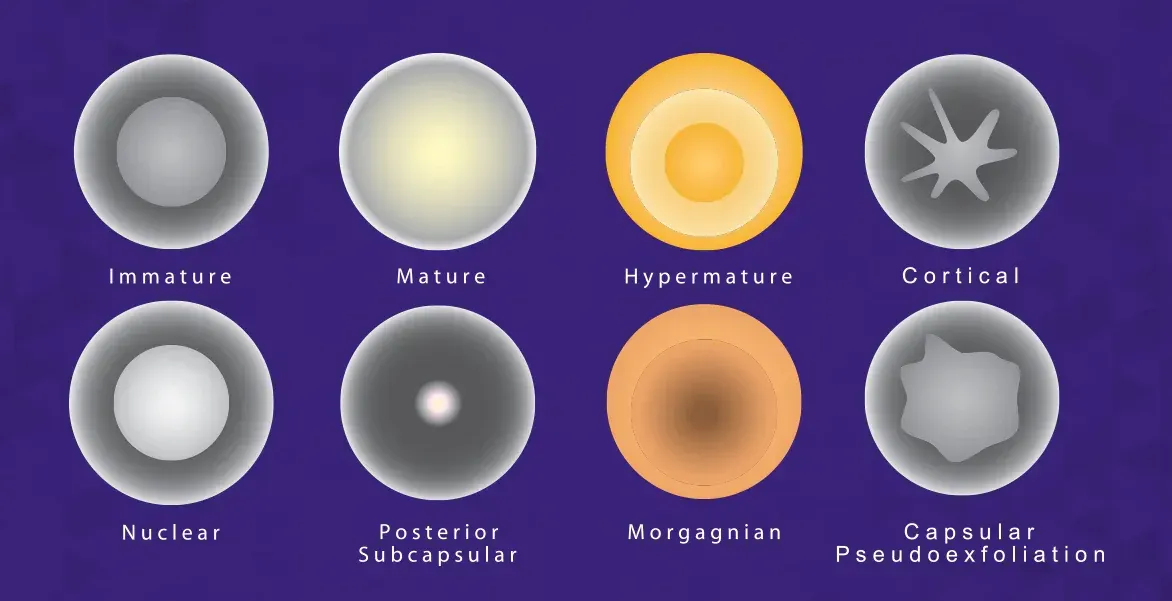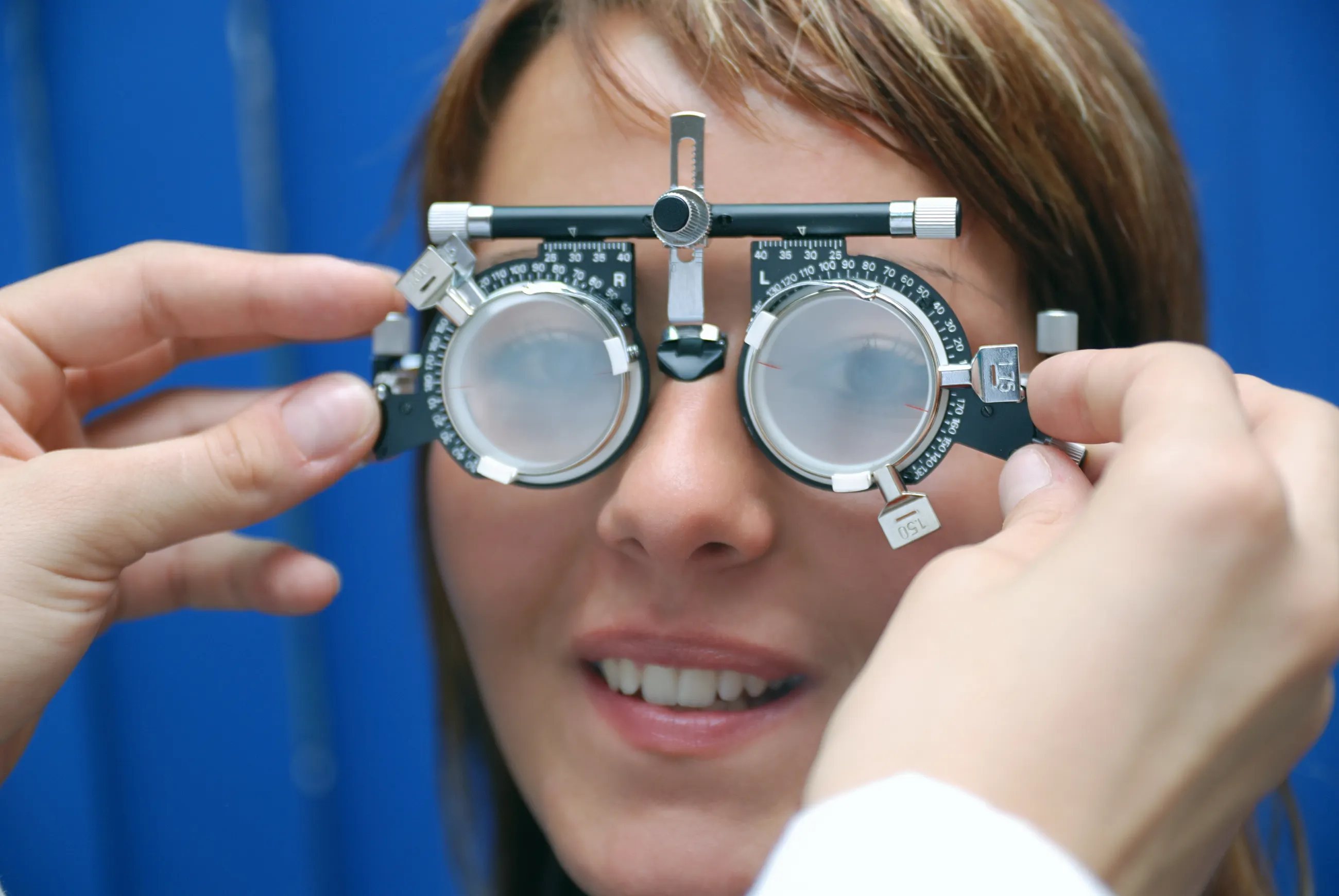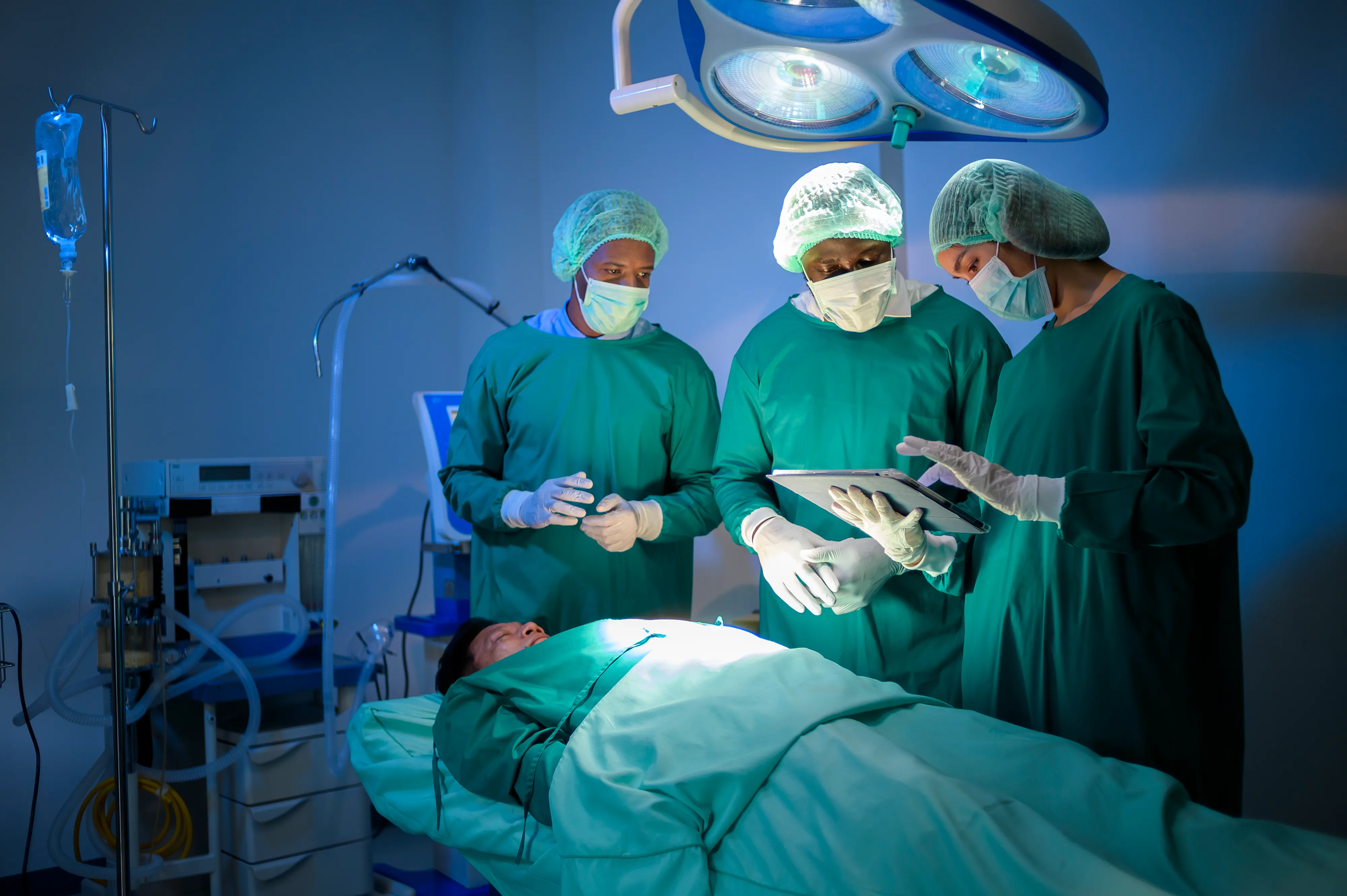Cataract Treatment
What is a Cataract?
A cataract is a dense, cloudy area that forms in the lens of the eye. A cataract begins when proteins in the eye form clumps that prevent the lens from sending clear images to the retina. The retina works by converting the light that comes through the lens into signals. It sends the signals to the optic nerve, which carries them to the brain.
It develops slowly and eventually interferes with your vision. You might end up with cataracts in both eyes, but they usually don’t form at the same time. Cataracts are common in older people. It is the most common cause of vision loss in people over age 40 and is also the principal cause of blindness in the world. Types of cataracts include:
A subcapsular cataract occurs at the back of the lens. People with diabetes or those taking high doses of steroid medications have a greater risk of developing a subcapsular cataract.
A nuclear cataract forms deep in the central zone (nucleus) of the lens. Nuclear cataracts usually are associated with ageing.
A cortical cataract is characterized by white, wedge-like opacities that start in the periphery of the lens and work their way to the centre in a spoke-like fashion. This type of cataract occurs in the lens cortex, which is the part of the lens that surrounds the central nucleus
What are the symptoms of Cataract?
At first, a cataract has little effect on your vision. You may notice that your vision is blurred a little, like looking through a cloudy piece of glass or viewing an impressionist painting.
A cataract may make light from the sun or a lamp seem too bright or glaring. Or you may notice when you drive at night that the oncoming headlights cause more glare than before. Colours may not appear as bright as they once did.
The type of cataract you have will affect exactly which symptoms you experience and how soon they will occur. When a nuclear cataract first develops, it can bring about a temporary improvement in your near vision, called "second sight."
If you think you have a cataract, see an eye doctor for an exam to find out for sure.
Common symptoms of cataracts include:
What Causes a Cataract?
The lens inside the eye works much like a camera lens, focusing light onto the retina for clear vision. It also adjusts the eye's focus, letting us see things clearly both up close and far away.
The lens is mostly made of water and protein. The protein is arranged in a precise way that keeps the lens clear and lets light pass through it.
But as we age, some of the protein may clump together and start to cloud a small area of the lens. This is a cataract, and over time, it may grow larger and cloud more of the lens, making it harder to see.
No one knows for sure why the eye's lens changes as we age, forming cataracts. But researchers worldwide have identified factors that may cause cataracts or are associated with cataract development.
Besides advancing age, cataract risk factors include several underlying causes of cataracts. These include:
What are the types of Cataract?
There are different types of cataracts. They’re classified based on where and how they develop in your eye.
How the Diagnosing of Cataracts happens?
Your doctor will perform a comprehensive eye exam to check for cataracts and to assess your vision. This will include an eye chart test to check your vision at different distances and tonometry to measure your eye pressure.
The most common tonometry test uses a painless puff of air to flatten your cornea and test your eye pressure. Your doctor will also put drops in your eyes to make your pupils bigger. This makes it easier to check the optic nerve and retina at the back of your eye for damage.
Other tests your doctor might perform include checking your sensitivity to glare and your perception of colours.
What is the treatment for cataract?
If you’re unable or uninterested in surgery, your doctor may be able to help you manage your symptoms. They may suggest stronger eyeglasses, magnifying lenses, or sunglasses with an anti-glare coating.
Surgery
Surgery is recommended when cataracts prevent you from going about your daily activities, such as reading or driving. It’s also performed when cataracts interfere with the treatment of other eye problems.
One surgical method, known as phacoemulsification, involves the use of ultrasound waves to break the lens apart and remove the pieces.
Extracapsular surgery involves removing the cloudy part of the lens through a long incision in the cornea. After surgery, an artificial intraocular lens is placed where the natural lens was.
Surgery to remove a cataract is generally very safe and has a high success rate. Most people can go home the same day as their surgery.
What is the Outlook of a Cataract?
Cataracts can interfere with daily activities and lead to blindness when left untreated. Although some stop growing, they don’t get smaller on their own. The surgical removal of cataracts is a very common procedure and is highly effective.
Prevention of Cataracts:
To reduce your risk of developing cataracts:
NEXT STEP
Before you agree to the test or the procedure make sure you know:

Types Of Cataract
Types of cataract surgery
There are majorly five types of cataract surgery, such as are Phacoemulsification (Phaco Surgery), Extracapsular Cataract Extraction (ECCE), Intracapsular Cataract Extraction (ICCE), Laser-Assisted Cataract Surgery (LACS), and Refractive Lens Exchange with Intraocular Lens (IOL) implants.Dec 1, 2023
a.Foldable and non foldable
b.Foldable IOls
c.Monofocal
b.Multifocal
c.EDOF( extended depth of focus lenses)
Types of intraocular lenses
Toric
a. monofocal
b. multifocal
What causes a cataract in the eyes?
The most common cause of cataracts is age-related changes in the lens of the eye, leading to opacity. Besides advancing age, cataract risk factors include:
-
Ultraviolet radiation
-
Diabetes
-
Hypertension
-
Smoking
-
Prolonged use of corticosteroid medications
-
Statin medicines used to reduce cholesterol
-
Previous eye injury or inflammation
-
Hormone replacement therapy
-
Significant alcohol consumption
-
High myopia
-
Family history
What is the course of Cataract Treatment?
The Saai Eye Hospital in Bangalore provides care to a large number of individuals exhibiting different cataract symptoms. Blurred vision, glare, light sensitivity, poor night vision, and fading colors are some of these symptoms. Expert physicians perform a thorough examination and use a variety of tests on people with cataracts in the eyes.
At Bangalore's Saai Eye Hospital, we're committed to giving our patients the best possible eye care. Using state-of-the-art technology, we provide complete cataract procedures that are precise and efficient. Our knowledgeable staff of experts responds to the particular requirements of every patient, guaranteeing a customized, patient-focused approach. With the use of cutting-edge diagnostic tools and tried-and-true surgical methods, we work to enhance and restore your vision so you can once again live clearly.
Bangalore's Top Cataract Surgeon
When it comes to the condition of your eyes, only the best care should be taken into consideration. Our staff at Saai Eye Hospital is lead by one of Bangalore's best cataract doctors. Our surgeons have a wealth of knowledge and a stellar reputation for providing each patient with unmatched care and attention. They make use of the most recent developments in ophthalmic technology to guarantee a speedy, safe, and efficient recovery, enabling you to regain your freedom and vision.
Comprehensive Ocular Examination: Determining the Actual Cause of Your Cataract
Refraction and retinoscopy are examinations performed to measure the eye's refractive error prior to cataract surgery. The measurement of intraocular pressure, or eye pressure, is done via tonometry. To assess the curvature of the eyeballs, use keratometry.


Comprehensive Ocular Examination: Determining the Actual Cause of Your Cataract
The only effective treatment option for cataracts is typically surgery. The surgery used to remove cataracts has undergone a significant revolution. Previously, an artificial lens was implanted and cataracts were removed with the use of a major incision in the eye. There were numerous difficulties with these operations, though. Consequently, smaller, self-sealing micro incisions are produced to insert a hard intraocular lens (IOL) following the development of minimal incision cataract surgery. Local anesthesia or topical anesthesia drops are used during cataract surgery. Using the most recent technology, like as phacoemulsification, self-healing incisions are used throughout the procedure to remove cataractous lenses. Receiving a cataract diagnosis can be frightening, but you're in good hands at Saai Eye Hospital. Our all-encompassing cataract care in Bangalore. blends cutting-edge technology with the knowledge
Surgery with Phacoemulsification for Cataracts
Phacoemulsification is a relatively new treatment in cataract surgery. It permits the insertion of flexible intraocular lenses and fewer incisions. As a result, it is often referred to as "phaco" or small incision cataract surgery. A little probe is put into the eye during the procedure. The hazy center of the lens is softened and broken by the probe using safe ultrasonic vibrations. It is thereafter removed by a suction. To restore eyesight, an artificial lens known as an Intraocular Lens of the highest caliber is implanted in place of this one. The rear portion of the lens capsule holds the intraocular lens in place (IOL). Furthermore, there is no need for sutures because contemporary foldable lens implants may fit through smaller incisions.


